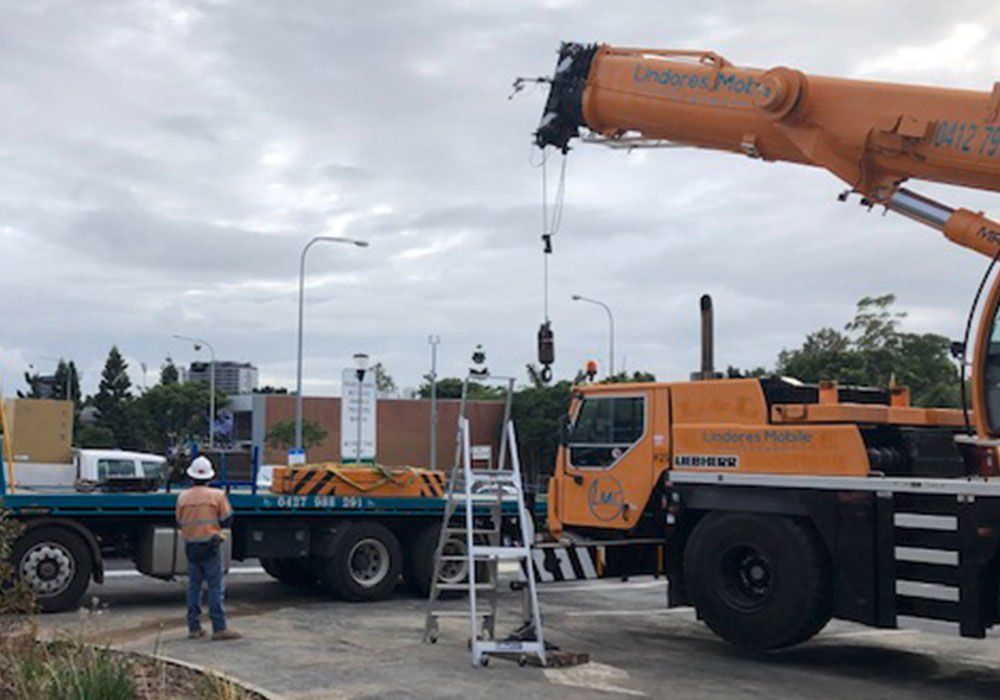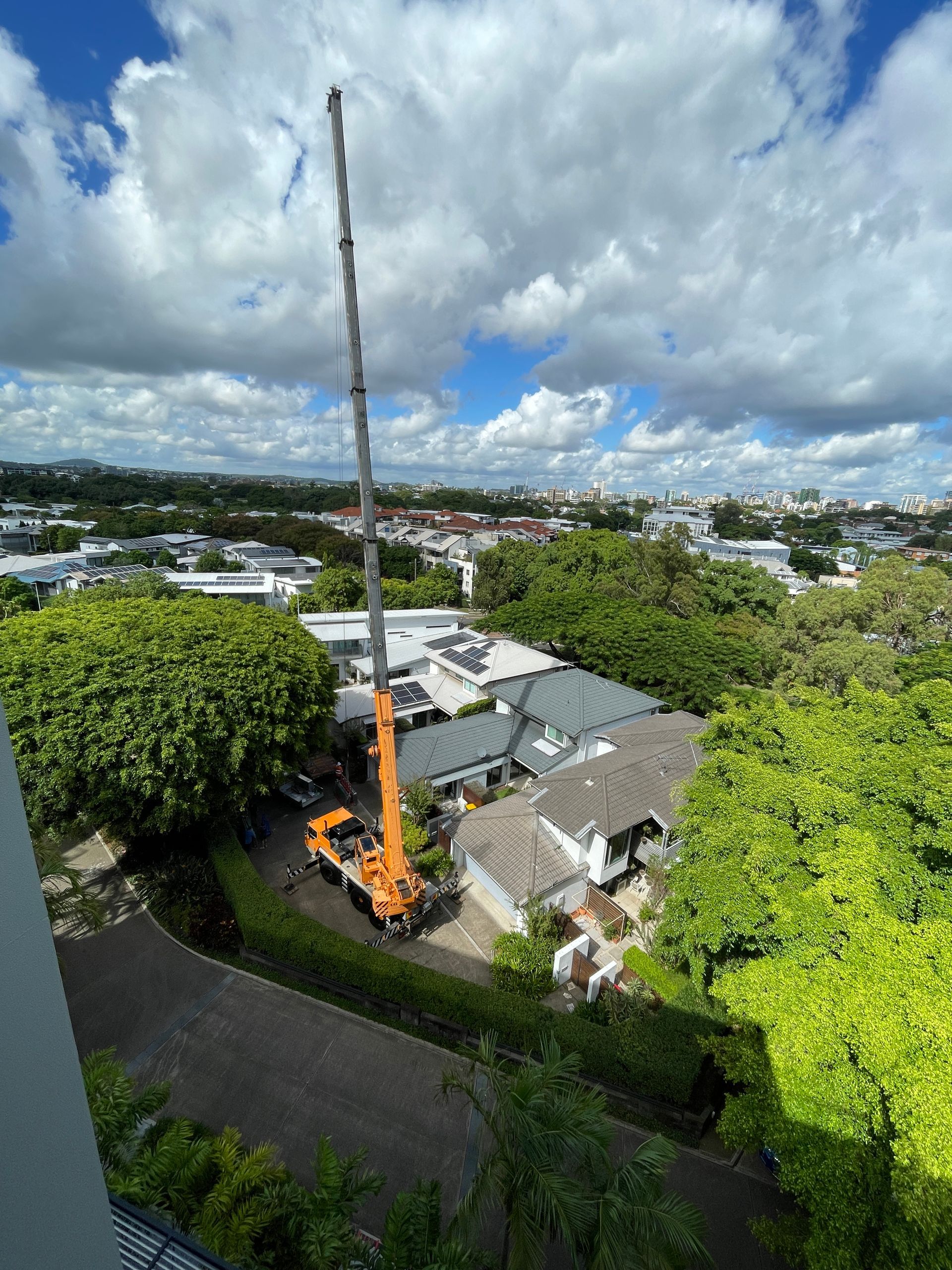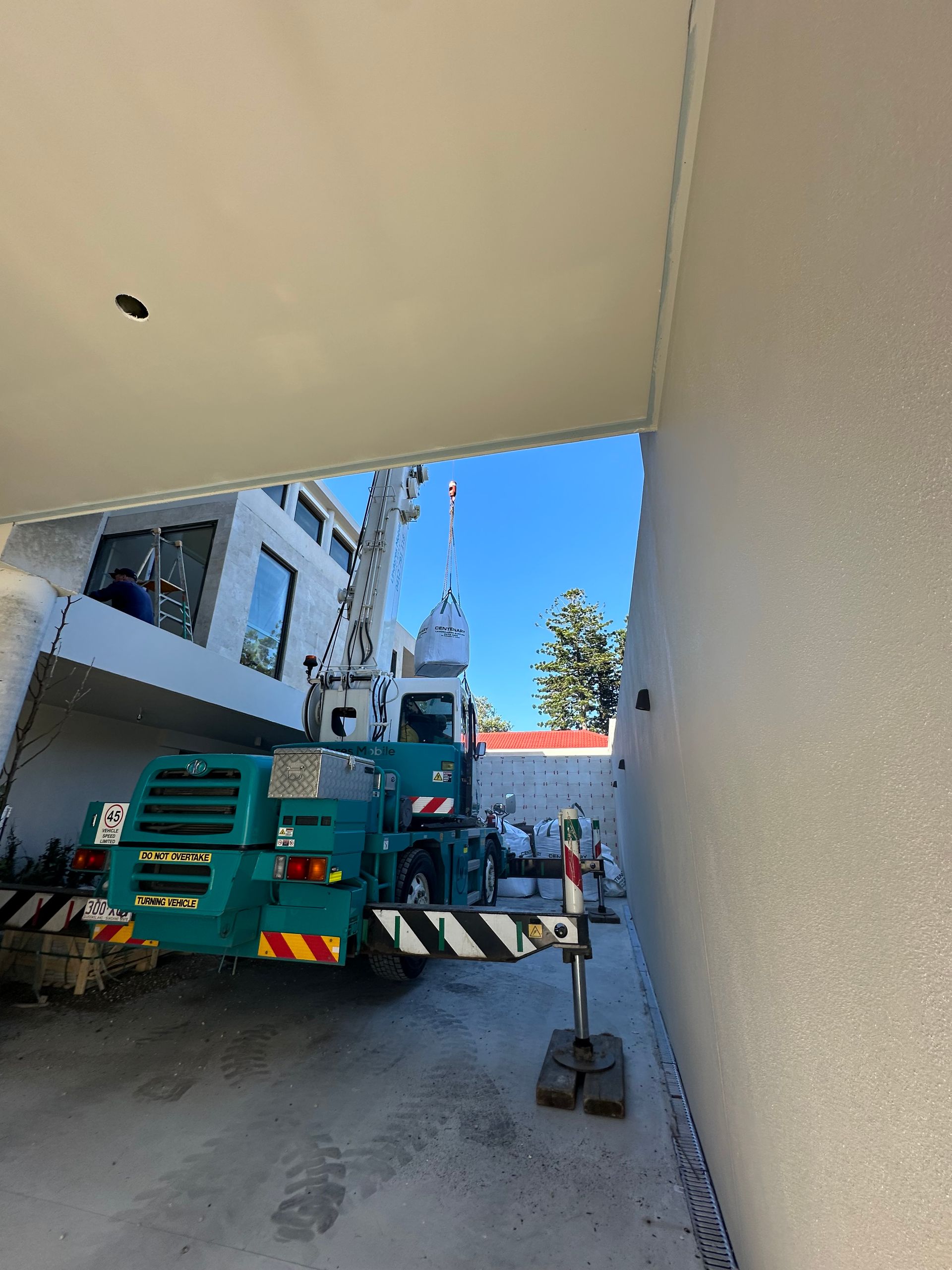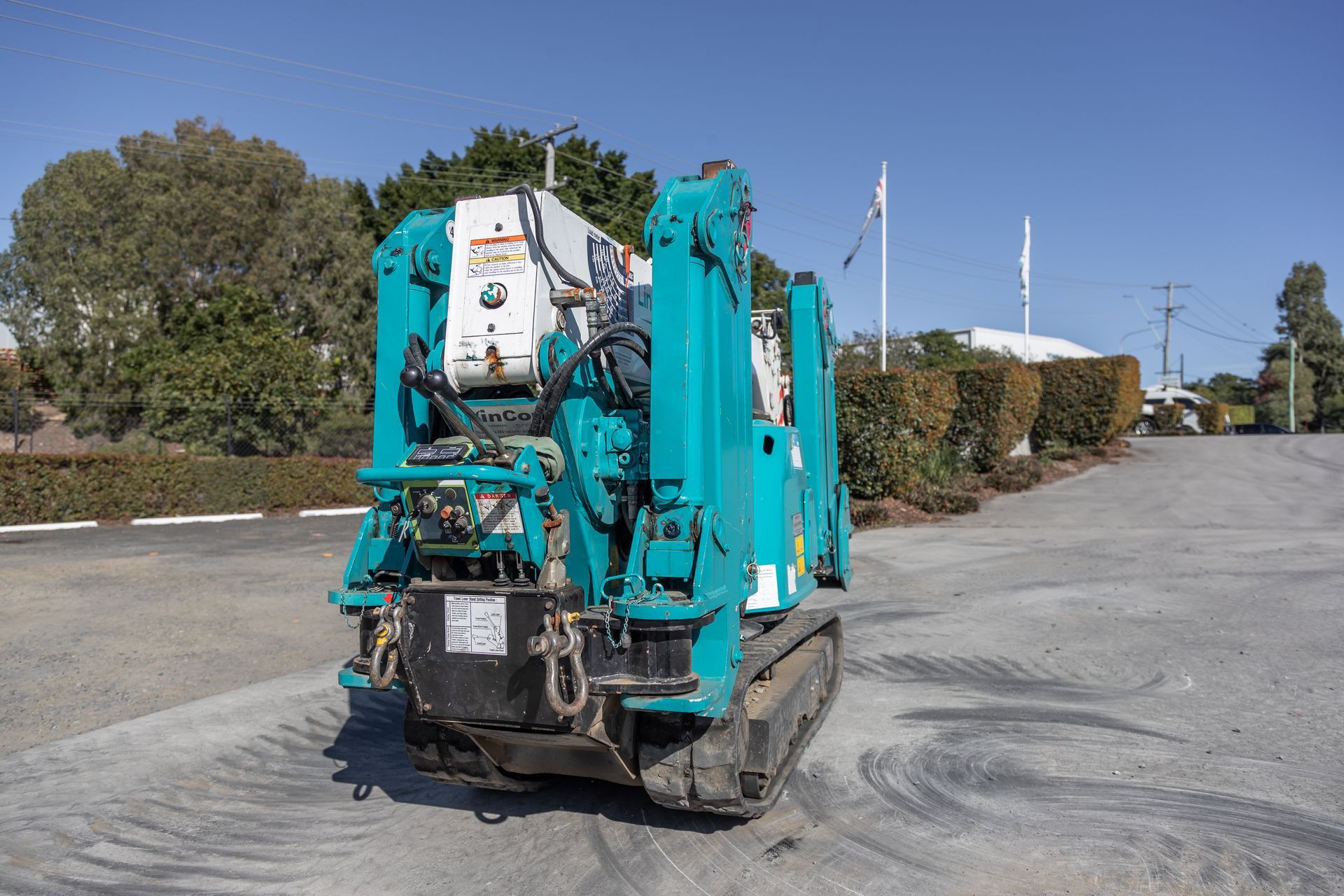What size mobile crane do I need?

Mobile cranes are useful heavy industry tools, used appropriately they can save a project in both time and money. It is not as simple as working out how heavy the load that you need to lift is and then determining the tonnage capacity of the crane that is required to lift it. Take a look at the other factors that come into play when looking at choosing what mobile crane you need for your next project.
What we need from you or at site inspection
What is the weight of the load that you need to lift?
Calculating the total weight of the load is essential information that your mobile crane hire team will need to help you determine what crane to choose. If you are unsure, you may need to consult an engineering professional to provide a load lift breakdown.
How far does the boom need to reach?
Calculate the approximate distance from the middle of the slew ring on the crane to the exact point where your lift needs to land.
Are there any clearance concerns?
Take a look at your potential crane site. Are there any height obstructions, powerlines or other possible overhead obstructions? If you are you operating within a building, what is the ceiling height?
Are there any lateral obstructions?
Is there anything that could impede the slewing motion of the mobile crane or cause a lateral obstruction, other buildings or structures?
What is the ground surface like?
Ground surface is incredibly important in determining what size crane you will need for your project. Is the ground surface uneven, gravelly or sandy? Is there a risk of rain and how will this change the ground surface. Can the ground support the weight of a crane? Do we need an engineering report for the crane to be set up? If indoors, what is the flooring like and does it need protection?
What is site access like?
Accessibility is another critical factor, both into the site and also on the site itself. It is essential to look at what the access points are, how wide they are and what sort of turning capacity is available on the site. For interior work, some of our smaller cranes can go through door frames and into lifts, so the width of these access points is also important to note.
Do you require the cranes to use a pick and carry function?
Most mobile cranes don’t pick and carry, for this we use franna cranes or humma cranes which are purposely built for this function.
What we do:
Take into account potential crane hardware sizes.
We consider the distance from the jib head to the hook and the type of hook that will be required. We also include in our calculations any other lift equipment that may be needed and how this will impact on the mechanics of the lift.Calculate the lift requirements, how heavy, how far and how high?
Special considerations for these requirements is what most of our lifts are based on.
Match the job requirements and specification to the most appropriate crane or cranes for your project.
It is important to remember that we have been in the business of planning and implementing successful mobile crane lifts for more than forty years. We have extremely experienced personnel who know how to plan a lift, where a two crane lift will be a safer option and how to execute for maximum efficiency. When it comes to crane hire, bigger is not always better; many of our clients are surprised at just how much our smaller Mini, Franna and City Cranes can lift and the flexibility that they can offer on the worksite. Most recently we specialised in Mini Cranes so therefore will never overestimate the crane required for your job.To talk through the requirements for your next project, get in touch with the team at Lindores Mobile Cranes. Our team has the experience to make sure that you make the right choice in crane hire and get the job done in the most efficient way possible.
The Liftout

When people think of crane hire, they often picture towering construction sites or major infrastructure projects. But across Southeast Queensland, an increasing number of residential builders are considering mobile cranes as an essential tool onsite. At Lindores Mobile Cranes , we’ve seen first-hand how reliable crane hire can simplify and speed up residential builds. Smarter Lifting for Modern Home Builds As homes get larger, blocks get smaller, and architectural designs become more complex, the need for precision lifting has never been greater. Roofing materials, structural steel, and even prefabricated walls often need to be placed quickly and safely in hard-to-reach locations. Our mobile cranes, including Mini Crawlers and Frannas , make light work of these tasks. This saves builders time, reduces manual handling, and improves site safety. With our experienced operators on board, there’s no guesswork, no delays, and no unnecessary risk. Explore our mobile crane fleet Tight Access? No Problem. Many of Brisbane’s older suburbs, like Paddington, Spring Hill, and Petrie Terrace, come with tight driveways, steep slopes, and minimal space for materials. That’s where compact mobile cranes and mini crawlers shine. They’re designed to work in confined spaces without compromising lifting capacity or site safety. We regularly help builders lift roofing, frames, pools, and more into hard-to-access sites, without the need for expensive site modifications or lengthy manual labour. Supporting the Sunshine Coast and Gold Coast Residential Market It’s not just Brisbane where we’re seeing demand. Across the Sunshine Coast, with its steep hinterland blocks, and the Gold Coast, where many homes are built close to canals or high-density zones, mobile crane hire is becoming a key part of building smarter, safer homes. Crane Hire That Fits the Residential Build Schedule We know how critical timing is for builders. Delays in lifting can hold up entire stages of the project. That’s why we offer flexible booking options, fast response times, and a commitment to showing up when we say we will. It’s part of the reason why so many residential builders across Southeast Queensland trust Lindores Mobile Cranes for their lifting needs. Ready to Lift Smarter on Your Next Build? No matter the project, our team has the equipment and expertise to help. Contact our team today by calling us on 07 3376 0611 or email lmcops@lmcranes.com.au.

Urban construction across Brisbane’s inner suburbs, like Brisbane City, Fortitude Valley and West End, presents a unique challenge. Limited street access, tight driveways, weight-restricted concrete slabs, and close proximity to neighbouring buildings mean that traditional mobile cranes simply won’t fit. At Lindores Mobile Cranes , we’ve seen how mini crawler cranes are transforming the way construction is carried out on these sites. Compact, precise, and highly mobile, these machines are fast becoming essential for projects across Queensland . Rethinking Lifting for Urban Environments In city and suburban projects, space is at a premium. Construction teams often deal with narrow laneways, busy streets, or strict local council rules that make large-scale crane operations unfeasible. In some cases, access is so restricted that conventional lifting equipment can’t get anywhere near the job site. That’s where mini crawler cranes come in. Built specifically for tight and complex environments, these machines allow builders to lift heavy materials safely and efficiently, without the need for wide access or extensive setup areas. See our full fleet of mobile and mini cranes. Compact Size, Serious Capability Despite their size, mini crawler cranes don’t compromise on performance. Designed to operate in confined spaces, they’re able to move through narrow driveways and even fit inside buildings if required. Their rubber tracks reduce surface pressure, making them safe for use on rooftops or polished concrete slabs, and their zero tail-swing allows for safe manoeuvring in environments with little margin for error. These features make them ideal for everything from steel erection and glass installation to HVAC placement and residential renovations. We’ve supported projects as varied as boutique homes in New Farm and shopfront fit outs in Surfers Paradise , proving how versatile these compact machines really are. Designed for the Modern Job Site Mini crawler cranes are an increasingly popular choice for residential builds, renovations, and even commercial fit outs across Queensland. Their small footprint and fast setup time mean less downtime, lower costs, and fewer headaches when working in restricted-access environments. Ready to Lift Smarter in Tight Spaces? At Lindores Mobile Cranes , we’ve helped countless clients across Brisbane , the Gold Coast , and South East Queensland navigate complex job sites with ease. Our team can advise you on the right crane for your lift, organise pre-lift planning, and provide experienced operators who understand the ins and outs of working in urban environments. Contact our team today by calling 07 3376 0611 or email lmcorps@lmcranes.com.au.

